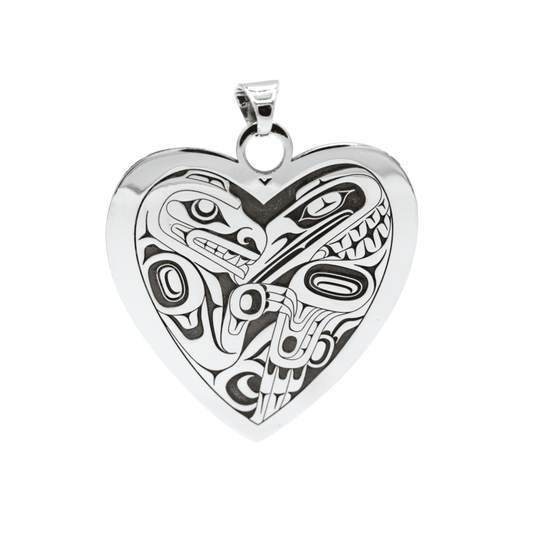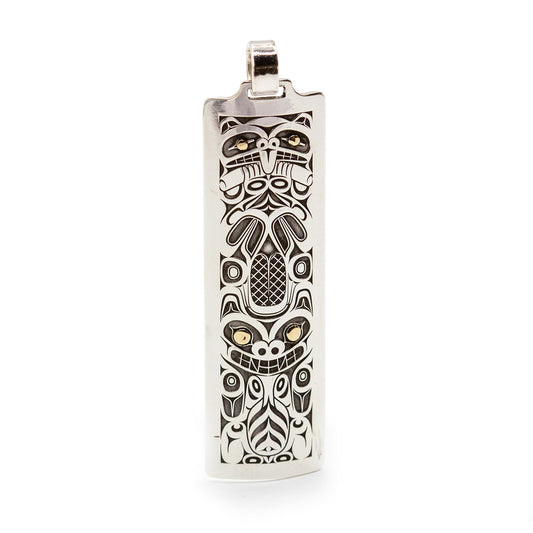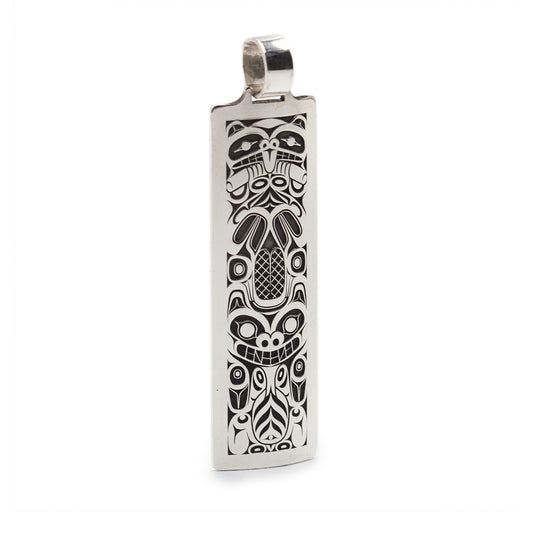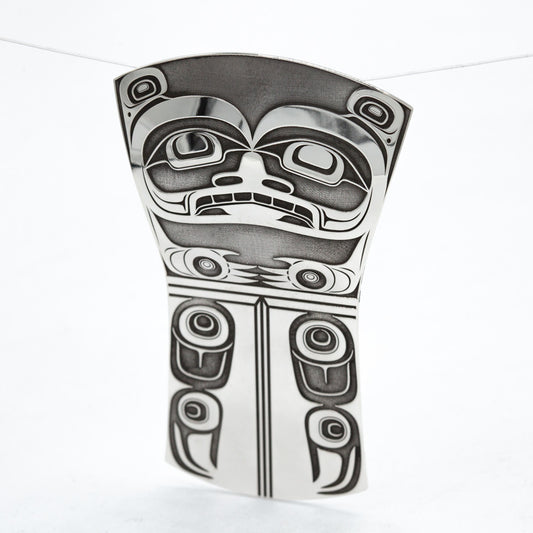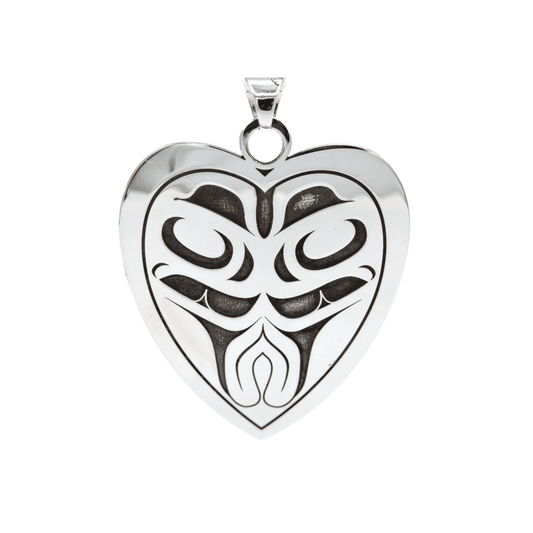Collection: The Bear Symbol
Indigenous Significance of the Bear Symbol
Characterized by its strength and resemblance to humans, the Bear is one of the most prevalent figures in crest and stories. The creatures are universally respected for their intelligence and intuition (Dawkins). They are considered to be a close relation of human-kind, perhaps because of physical characteristics such as size, appearance and expression, and behaviours such as standing on two hind legs, gathering plants and berries, fishing and nurturing young (Shearar).
The bear represents a link between the human and non-human animal realms, as well as between the secular natural realm and the divine or supernatural. Due to their strength and fierceness, Bears are frequently the guardians, protectors and helping spirits of warriors (Shearar).
Bearskin cloaks can be seen worn during ceremonial and ritual performances. Historically, Bear teeth and claws were used by Indigenous groups for jewellery, ornamentation and amulets of great power. A Bear claw crown, for example, may be often worn by a shaman (Shearar).
Artistic Characteristics of the Bear
In art, the Bear can be identified by its strong physical characteristics. These include its wide mouth, lips and teeth (usually sharp, often displaying prominent fangs); a short, flat, broad snout (often with round nostrils); short squared ears; ovoid eyes; large, clawed feet (which may be turned inward in a pigeon-toed fashion); little or no tail. The tongue is sometimes protruding, extending downwards (Shearar). A protruding tongue is often a good way to distinguish between a Bear and a Wolf in artwork (Dawkins).
